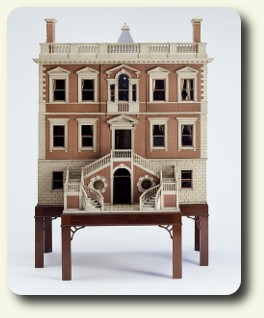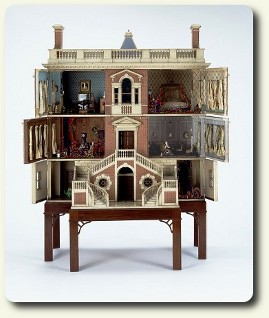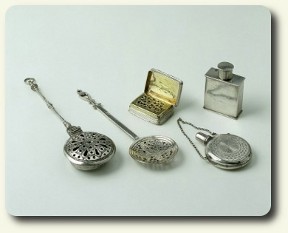


Time did not do much to improve the human condition, and life continued to be a struggle. Most people were in no position to preserve their meager possessions for sentimental reasons. Necessity prevailed, but the dollhouse did not.
 Then, out of the blue, the first dollhouse finally made its appearance nearly 3500 years after Meketre died! Sadly, it did not survive, but its story did. In 1554, Albrecht V, Duke of Bavaria commissioned a miniature replica of his own residence, possibly as a gift for his daughter. It was a lavish gift with four levels of rooms filled with intricate furnishings.
Then, out of the blue, the first dollhouse finally made its appearance nearly 3500 years after Meketre died! Sadly, it did not survive, but its story did. In 1554, Albrecht V, Duke of Bavaria commissioned a miniature replica of his own residence, possibly as a gift for his daughter. It was a lavish gift with four levels of rooms filled with intricate furnishings.
In 1598, the Duke, being a patron of the arts and a serious collector, prudently recorded a description of the house and its contents. The Munich Baby House, 'baby' referring to its small size, must have been a marvel to behold, but can only be imagined as it is thought to have been destroyed in a fire in 1674.
The fact that it once existed is attributed to the wealth of a man whose life was filled with the acquisition of art and the pursuit of pleasure. Even though the Duke did not need the wooden house to warm his own home, fire took it, nonetheless.

With only a description of the dollhouse in existence, should it still be considered the first of its kind? It had walls and a roof, but the design was that of a display case, a popular way for the affluent of the period to display their trophies.
Contrary to their designation, baby houses became very popular with adults, but remained hands off for children, making one question whether the Duke's daughter was ever allowed to really 'play' with her gift.
Eventually the adults realized how tantalizing their display cabinets were to the children in the home, probably after repeatedly finding the rooms mysteriously rearranged, a roasted turkey sitting on a bed, or a chair with a missing leg. But the adult collections were worth a fortune, sometimes equaling the value of a life-size home, and the children were relegated to supervised sessions, mainly used for instruction.

Baby houses were excellent for teaching girls how to design and manage a household in preparation for when they would become mistresses of their own homes. While the boys were studying the math needed to build the house, the girls were hard at work playing house, although it's a good bet the boys were responsible for the broken chair. Yet these pricey, handcrafted houses were available only to children of privilege, and remained that way for three hundred years.
Whether one believes that a baby house should be considered a dollhouse is a personal choice, just as whether one believes Pluto is still a planet. Purists would argue that a cabinet is not a house, and a description of a non-existent cabinet cannot be considered the first dollhouse. For them, seeing is believing, in which case the Munich Baby House loses on both counts. It would be some time before a true dollhouse appeared that would satisfy these sticklers.
Custom Dolls, Houses & Miniatures / CDHM







